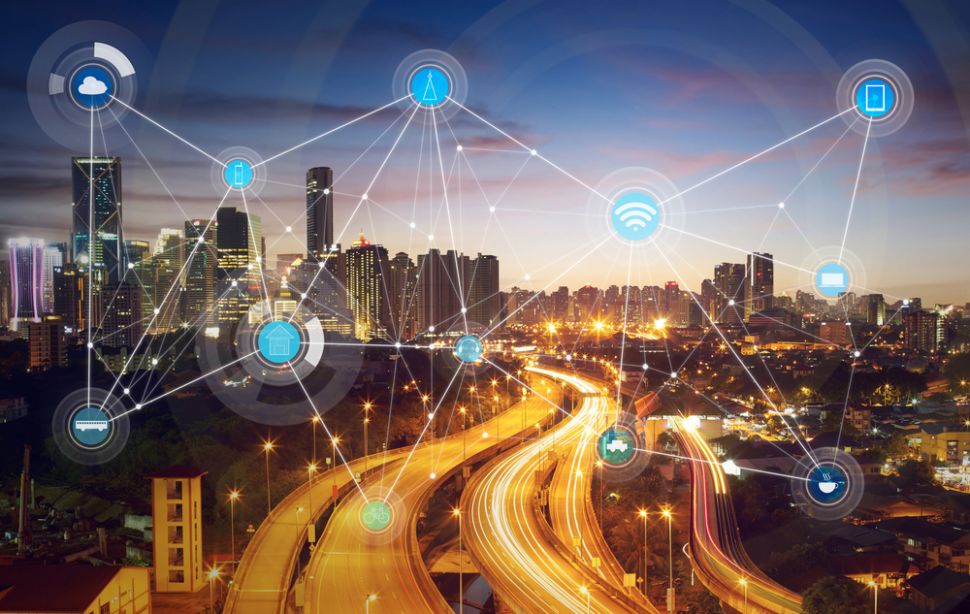C-V2X: Connected cars and the future of transport
Connected cars and the future of transport

Cellular Vehicle-to-Everything, or C-V2X, continues to make strides as the preferred technology for vehicles to communicate with one another and with their surroundings. Through acceptance of standards by the industry, a string of successful trials, and initial commercialization, C-V2X shows growing promise for greater road safety, efficiency, and mobility. This is particularly important for future use of non-line-of-sight sensors for autonomous vehicles as it paves the way for the next generation of transport.
So, what is C-V2X?
C-V2X is a technology that allows vehicles to communicate with each other and virtually everything around them (V2X). It is designed to support safer, more autonomous vehicles of the future, while improving traffic flow and safety for vehicle occupants, pedestrians, and cyclists.
C-V2X helps vehicles to communicate wirelessly from vehicle-to-vehicle (V2V) and, may someday, via vehicle-to-pedestrian (V2P), which could greatly enhance collision avoidance systems. In addition to communicating with other road users, C-V2X facilitates the vehicle to communicate with the wider network, vehicle-to-network (V2N), to access real-time traffic or routing services via cloud services. Cars won’t just simply broadcast their location, speed and direction.
Using vehicle-to-infrastructure (V2I) technology, cars may be able to coordinate with complex maneuvers. Additionally, by communicating with traffic signals, cars may be able to synchronize a journey with green lights to avoid delays and idle time. Vehicles may even talk to each other to create space for more cars on the road, improving fuel economy, congestion and emissions.
How 5G could shift C-V2X into high gear
Paired with 5G network capabilities, vehicles may be able to share rich, real-time data and support fully autonomous driving experiences, which could improve road safety and traffic efficiency.
Handling time-sensitive decision-making processes in the car requires low latency data exchange with external sources, such as surrounding objects, as well as access to edge compute capabilities. 5G offers such communication coupled with high throughput, allowing on board compute engines to access remote sources and exchange data efficiently and highly effectively. 360-degree C-V2X systems can be used to detect potential collision objects, and when combined with new data, exchange warning systems between vehicles ultra-reliable and safety-critical decisions such as automated braking can be made instantaneously by both vehicles.
A modern technology with superior radio performance, C-V2X is capable of providing enhanced range and reliability for low-latency direct communication. Unlike other communication technologies, C-V2X combines both direct and network-based technologies in a synergetic way. C-V2X does not need cellular networks to provide direct communication for safety and local mobility services.
Are you a pro? Subscribe to our newsletter
Sign up to the TechRadar Pro newsletter to get all the top news, opinion, features and guidance your business needs to succeed!
In many regions of the world, regulators have ring-fenced network frequency bands for Intelligent Transport Systems (ITS), specifically the 5.9 GHz spectrum for road critical safety ITS communications between vehicles, infrastructure and people.
Co-existence within 3GPP technologies allows for integration into future technology advances. 5G V2X (3GPP R16 and beyond) devices offer additional ITS functionality to that of LTE-V2X (3GPP Rel-14/15) and are also built to seamlessly co-exist, so just like the smartphone, older generations and newer generations can be integrated into the same vehicle.
What’s next for C-V2X?
C-V2X is likely the only V2X technology with a clear, evolution path to 5G, and is expected to be ready for commercial deployment in vehicles within the year. The maturity of the technology has won over many auto manufacturers, including Ford in the US and the multiple auto OEMs in China.
Road operators within each of these countries have also started to deploy C-V2X roadside units, and regions are aligning their connected vehicle efforts with the ETSI TC ITS TS 103 097 specification security services standard to ensure optimum safety and efficiency.
A vision that is emerging from the auto industry is not just about moving from point A to point B, 5G roads may take a different form with the advent of automation, as 5G is expected to fundamentally change the way that we think about transport networks. Data could be transmitted between points along smart roads, with speed and at great volumes.
Network connectivity and reliable coverage is crucial when it comes to the future development of autonomous vehicles. Improved data capture and connectivity can help overcome one of the biggest hurdles when it comes to autonomous vehicle adoption: public trust. C-V2X technology could increase public confidence that remotely operated vehicles are designed to operate safety.
We’re excited about the adoption of C-V2X globally, leading the way in the next generation of transport and striving to make our roads safer and smarter.
- Enrico Salvatori, Senior Vice President and President of Qualcomm Europe.
- We've featured the best business smartphones.
Enrico Salvatori, Senior Vice President and President of Qualcomm Europe, Inc.